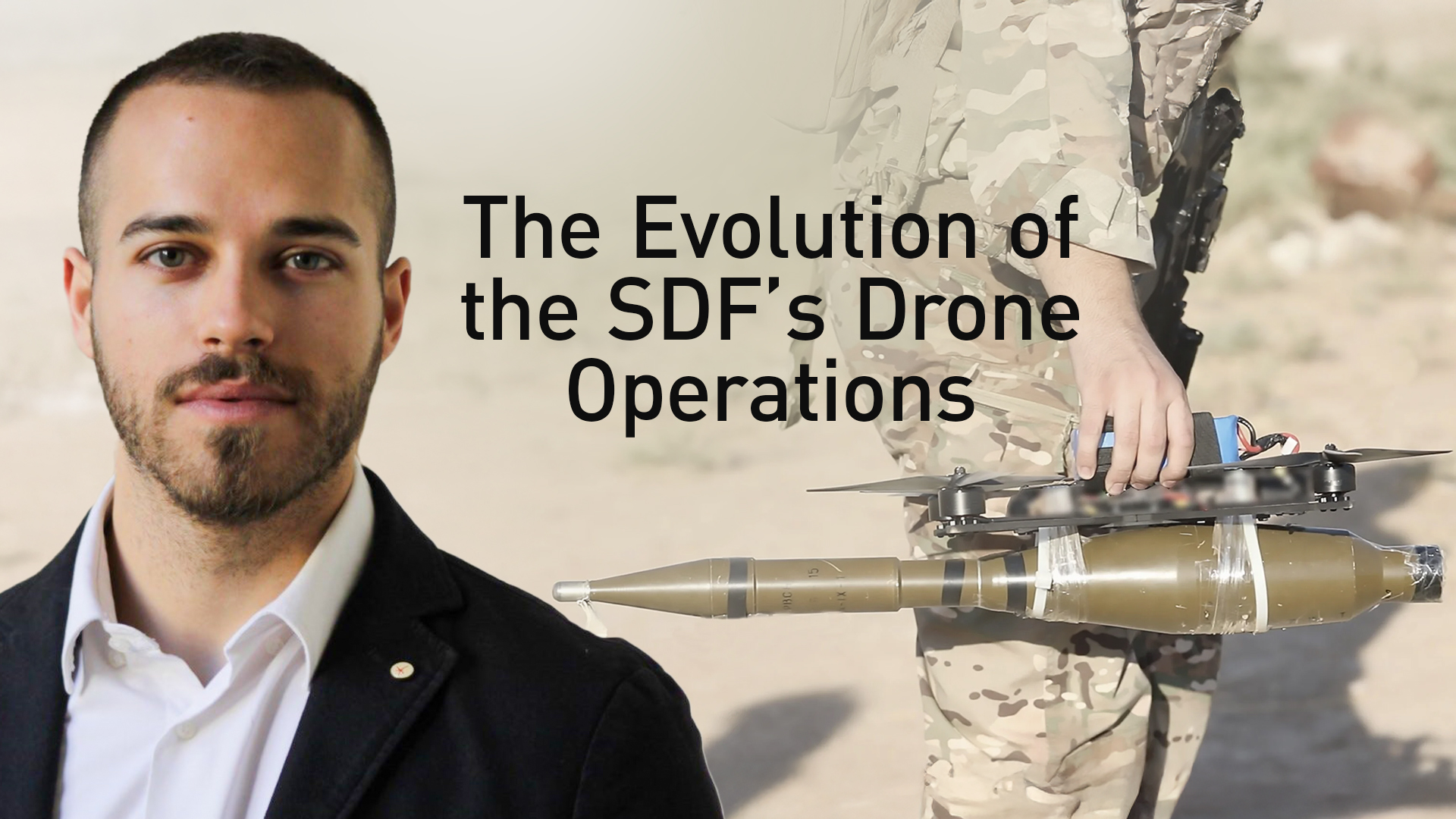SDF’s Drone Warfare: A Tactical Shift in Syria’s Ongoing Conflict
Borsari’s analysis indicates that the SDF has doubled its drone attacks in just one month, escalating from 61 observed strikes in December 2024 to 135 in January 2025.

ERBIL (Kurdistan24) - According to an analysis published by Federico Borsari on Militant Wire, the Syrian Democratic Forces (SDF) has rapidly evolved its use of drones to reshape the battlefield against better-equipped adversaries. Borsari, a resident fellow at the Center for European Policy Analysis (CEPA) and a defense analyst specializing in modern warfare, details how the group's adaptation of small drone warfare has intensified in recent weeks.
In the cover of the night, a Turkish-backed Syrian National Army (SNA) convoy cautiously moves near Syria’s strategic Tishreen Dam. Unbeknownst to them, a modified commercial drone, equipped with thermal sensors and loaded with repurposed VOG-17 munitions, silently tracks their movement. Moments later, precision strikes illuminate the night sky as vehicles erupt in flames. This scenario, once rare, has now become a frequent occurrence in the region, marking the SDF’s growing proficiency in drone warfare.
A Rapidly Evolving Drone Program
Borsari’s analysis indicates that the SDF has doubled its drone attacks in just one month, escalating from 61 observed strikes in December 2024 to 135 in January 2025. While commercial drones have been used in conflicts worldwide, the SDF’s strategy is unique in its deliberate emphasis on mobility denial.
“More than half of the observed drone strikes—57%—have targeted vehicles rather than personnel or buildings,” Borsari explains. “This is a calculated move. The SDF understands that its adversaries, particularly the Syrian National Army (SNA), have greater conventional military capabilities, including heavy armor and advanced intelligence support from Turkey. By focusing on vehicles, the SDF disrupts their logistics and freedom of movement, limiting their ability to sustain operations.”
The SDF’s approach is not about holding territory through conventional means but rather ensuring that enemy forces cannot freely operate in contested zones. This mirrors tactics seen in Ukraine, where drones are leveraged to undermine superior mechanized forces.
The Tools of a Modern Insurgency
The SDF primarily relies on modified commercial drones, including DJI and Autel models for intelligence, surveillance, and reconnaissance (ISR), as well as weaponized first-person view (FPV) drones for kamikaze-style attacks. These FPV drones, built from affordable Chinese carbon frames, are armed with adapted PG-7 HEAT grenades or repurposed 60mm mortar rounds.
“The combination of commercially available drones and repurposed explosives has become standard practice in modern conflicts, from Ukraine to Sudan to Myanmar,” Borsari notes. “The SDF is not reinventing drone warfare; it is implementing proven tactics with remarkable efficiency.”
Crowdfunding initiatives have also played a role in sustaining the SDF’s drone program, following a trend seen in the Ukrainian conflict. These funds have enabled the SDF to expand operations and maintain a high tempo of strikes despite limited resources.
A Strategic Focus on the Tishreen Dam
The concentration of drone strikes around the Tishreen Dam and the Manbij countryside underscores the SDF’s strategic priorities.
“The Tishreen Dam is a critical infrastructure asset,” Borsari says. “Controlling the area means holding leverage over water and power supplies in the region, making it a key target for both the SDF and its adversaries.”
Drone attacks have not been limited to SNA positions; Turkish military outposts have also faced repeated strikes, sometimes multiple times per day. This highlights the SDF’s growing confidence in deploying drones against not just proxy forces but also a NATO-member military.
A Growing Tactical Advantage
The SDF’s drone operations follow a structured approach. ISR drones provide real-time intelligence from 150-300 meters above ground, enabling accurate targeting. FPV drones and explosive-dropping UAVs then execute strikes, while ISR platforms remain overhead to conduct immediate battle damage assessments and ensure follow-up attacks if needed.
“Their command structure mirrors what we’ve seen in Ukraine and with groups like Hayat Tahrir al-Sham (HTS),” Borsari explains. “They use semi-fixed command centers for coordination and rely on mobile drone teams to provide tactical flexibility. Crucially, they have also adopted tunnel networks to conceal movements and launch attacks from secure locations.”
Despite their success, the SDF is not immune to imitation. The SNA has begun deploying its own FPV drones, a direct response to the SDF’s effectiveness.
“Drone warfare is becoming a standardized practice across different conflicts,” Borsari warns. “As commercial drone technology and weaponization techniques spread, the tactical advantage of any given force will be short-lived unless it continuously adapts.”
A Broader Trend in Modern Warfare
The SDF’s drone strategy represents a broader trend in asymmetric warfare: non-state actors using commercially available technology to challenge conventional militaries.
“This is a significant shift,” Borsari concludes. “We are witnessing the continued democratization of drone warfare. The real advantage no longer lies in technological innovation alone but in superior mission planning, target selection, and tactical adaptation.”
As the battle for control over the Tishreen Dam and surrounding areas intensifies, the SDF’s drone campaign serves as a case study of how insurgent forces can leverage modern technology to counter more powerful adversaries. Whether this advantage will hold remains to be seen, but one thing is clear: the era of small drone warfare is here to stay.